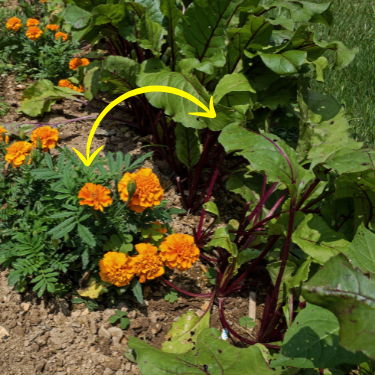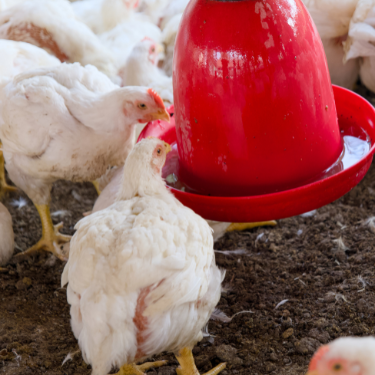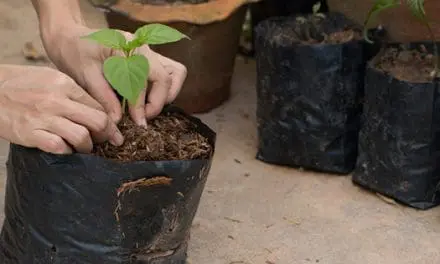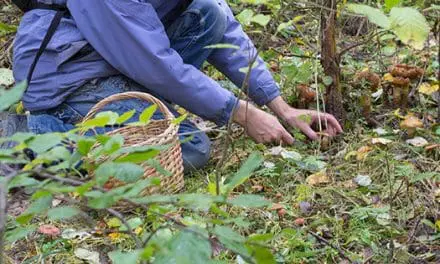Unlock the secrets of sustainable living with insights straight from the Amish playbook. In this revealing article, we’ll explore 12 time-tested farming techniques that have powered Amish self-reliance for generations—methods so potent they were deemed too dangerous to share outside of their community.
While you might know some of them, few people know all 12 secrets presented below.
Companion Planting
The Amish are masters of companion planting, which involves growing certain plants together because they help each other out. A classic example is the “Three Sisters” method of planting corn, beans, and squash together. Corn gives beans something to climb, beans return nitrogen to the soil, and squash covers the ground to keep weeds down and moisture in.
You can adopt companion planting to get more from your garden space, increase yields, and cut back on the need for synthetic fertilizers and pesticides.
You can use these simple Amish companion planting techniques to boost your harvest and get twice as much food from the same small space, without any extra work. Read all about them right here.
Horse-Powered Agriculture
The Amish mostly rely on horses for plowing fields and moving goods around. While many modern farms use tractors and machinery, the Amish stick to horse-drawn equipment for planting and harvesting. In a long-term crisis where fuel might be scarce or too expensive, horse-powered farming becomes a practical alternative.
If you’re prepping for tough times, it’s worth getting familiar with animal-powered methods and manual tools. Even if you don’t have access to horses, learning to use tools like hoes, scythes, and wheelbarrows will help you keep your garden or small farm going without modern machinery.
Organic Crop Rotation
Amish farmers prioritize keeping their soil healthy by practicing crop rotation. This old-school technique involves planting different crops in the same spot over time to avoid draining the soil of nutrients. For example, they might plant corn one year, then switch to beans the next to add nitrogen back into the soil. Crop rotation also helps control pests naturally, cutting down on the need for chemical fertilizers.
You can use this method to keep your soil fertile and productive year after year. This approach is especially useful when you can’t rely on synthetic fertilizers, ensuring your garden thrives long-term. I first learned about it from the Amish Ways book. Honestly, I wish more people knew about it; it’s a game-changer for any homesteader.
Heirloom Seeds
The Amish prefer heirloom seeds because they’re hardy, flavorful, and can reproduce naturally. This is not necessarily one of the Amish farming secrets since it is known by farmers of all kinds but the Amish do tend to use it more. Unlike hybrid seeds, which are often sterile or unreliable for future planting, heirloom seeds can be saved and used year after year.
For homesteaders, stocking up on heirloom seeds and learning how to properly save them is a smart move. Not only does it reduce dependency on commercial seed companies, but it also helps preserve biodiversity and provides a steady food supply during extended crises.
Homegrown Herbal Medicine
Many Amish families grow medicinal herbs like echinacea, chamomile, and comfrey, which they use to treat common ailments. You can benefit from growing your own medicinal herbs as well. Learning how to harvest, dry, and prepare these herbs can be a lifesaver when conventional medicine isn’t available.
Amish households often keep a small “herb corner” where they grow plants for everyday ailments. They carefully dry herbs like yarrow to stop minor bleeding, lavender to calm anxiety, and peppermint to ease stomach discomfort. Instead of reaching for store-bought medicine, they make simple remedies like infused oils, teas, and poultices. By observing these practices, you can learn how to use your own garden to address common health issues naturally, just like the Amish have done for generations.
I found a great kit with 4,818 high-quality, NON-GMO seeds packaged in the US, that you can turn into hundreds of powerful natural remedies without spending a dime at the pharmacy anymore. It contains one plant for every part of your body – you’ll find a painkiller, an anti-inflammatory, an anti-parasitic, and even some plants that can help people with diabetes and autoimmune disorders. It’s called the Medicinal Garden Kit and you can find it here. But you might wanna hurry, cause it’s that good it’s usually sold out.
Community-Centered Farming
One of the biggest strengths of Amish life is their sense of community. They share resources, labor, and knowledge to help each other out, whether it’s for harvesting crops or building a barn. This collective effort allows them to thrive without modern conveniences. You can learn a lot from this mindset by building networks with like-minded people. Sharing tools, trading crops, or pitching in on large projects creates a support system that’s invaluable when things get tough.
Simple Irrigation
The Amish often use gravity-fed irrigation or rainwater collection to water their crops. By capturing rainwater in barrels or cisterns, they can keep their fields irrigated without the need for modern plumbing or electric pumps. You can adopt these methods to ensure a steady water supply for their gardens during dry spells, without relying on the grid.
Even if you have zero experience in this area, your task becomes incredibly simple with this backpack-sized water generator. It’s a truly groundbreaking solution that gives you access to a device capable of producing over 40 gallons of water per day. Out of thin air!
Using Cover Crops
To keep their soil in good shape, the Amish often plant cover crops like clover, rye, or alfalfa after the main growing season. These crops help prevent erosion, smother weeds, and add organic matter back into the soil. In the spring, cover crops are tilled into the ground, boosting the soil’s fertility for the next round of planting.
For homesteaders, adopting this practice is a great way to extend the life of your garden and keep your soil healthy, reducing the need for chemical fertilizers and maintaining a steady food supply even in difficult times.
Livestock Integration
Amish farms often integrate livestock like chickens, cows, and pigs into their farming systems. These animals provide manure, which helps fertilize the crops, while crop leftovers are fed to the animals, creating a cycle where nothing goes to waste.
You can follow this example of Amish farming secrets by raising small livestock, such as chickens or rabbits, to provide both food and natural fertilizer. Even if you’re in a suburban setting, a few chickens can make a big difference in how self-sufficient you are.
Minimal Technology Reliance
One of the most impressive things about Amish farming is how little it relies on modern technology. By working without tractors, irrigation systems, or chemical pesticides, the Amish have created systems that are resilient to power outages or fuel shortages.
Homesteaders can benefit from learning similar low-tech techniques, like using hand tools, setting up rainwater collection systems, and practicing natural pest control. By reducing your reliance on external inputs, you’ll be more prepared for disruptions to the grid or supply chains. You can learn how to create your own pressurized rainwater collecting system using nothing but some blue barrels from this guide.
Home-Made Compost
The Amish understand the value of composting. They turn manure, food scraps, and plant waste into rich soil that keeps their crops thriving. You can do the same by setting up compost piles or bins on your homestead. This provides a continuous source of natural fertilizer, which is critical in a world where store-bought options might not always be available.
Related: Vermicomposting: A Simple Way to Turn Scraps Into Black Gold
Root Cellaring for Preservation
The Amish have long perfected the art of food preservation without relying on modern refrigeration, notably through the use of root cellars—cool, underground spaces that keep produce fresh for extended periods.
Related: Ingenious Ways to Freeze-Dry Your Food at Home for 10+ Years Shelf Life
A well-designed underground cellar, such as the one described in The Easy Cellar, offers exactly that kind of protection. Built a few feet beneath your backyard, this discreet shelter can store enough food, water, and essential supplies to sustain you and your family for several months. Inspired by traditional root cellars used by our ancestors, this modern design has been improved to provide far greater security, similar to a small-scale bunker. Importantly, it also offers a significant layer of defense against an EMP strike, shielding your critical supplies and providing a refuge when all electronic systems fail.
Not only does it serve as a food storage solution, but it also functions as a storm shelter, offering protection during natural disasters. Even better, this shelter is very affordable. You can build it for under $400 and complete it in less than a week, entirely on your own, without the need for expensive contractors or specialized equipment.
Learn More Amish Secrets
Many of these powerful tips come straight from The Amish Ways Book – a rare, physical guide packed with hundreds of proven survival strategies rooted in Amish tradition.
In the book, you’ll also find many other secret Amish tips and techniques that could save your life in a crisis.
For the first time ever, this 200-year-old wisdom is available in a beautifully made hardcover edition, authored by Eddie Swartzentruber, a man who spent 16 years living within the Amish community and learning their way of life first-hand. You can grab your own copy today and claim 3 FREE BONUSES using my exclusive 76% discount coupon right here.
These time-honored techniques have helped the Amish thrive off-grid and remain resilient in the face of societal collapse. Don’t wait for disaster to strike. Start mastering these skills today!
Here’s how you can make Bread in a Jar!
Final Thoughts
Incorporating Amish farming techniques into your preparedness plans can significantly enhance your self-sufficiency and resilience.
We invite you to share your thoughts and experiences. Have you implemented any of these Amish farming secrets? What challenges or successes have you encountered on your journey toward self-reliance? Your insights could inspire and assist others in our community. Please leave your comments below.
The article was first published on askaprepper.com
I Visited An Amish Farm. This Is How It Went
Cut Down On Your Bills In 2025 With These Easy Amish Projects (Video)
Amish Powerless Tools For A World Without Power


















